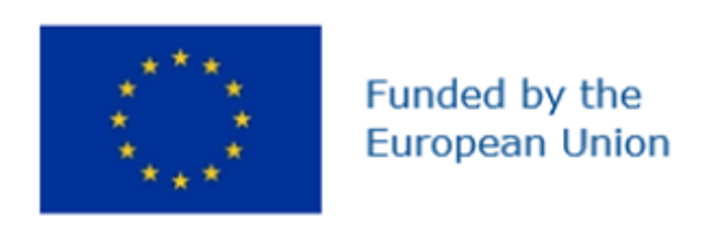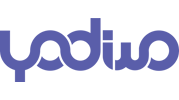30 Jun European Projects
GIOTTO

Active aGeIng and Osteoporosis: The next challenge for smarT nanobiOmaterials and 3D technologies
Acronym: GIOTTO
Website: https://www.giottoproject.eu/
The Project
Osteoporosis is a systemic, degenerative disorder, predominantly affecting postmenopausal women (1 out of 3) but also men at an advanced age (1 out of 5) and it increases the prevalence of fracture risk. One fifth of people suffering an osteoporotic fracture will die within a year and half will become dependent. Appropriate anti-osteoporotic drugs are available but have serious side effects and they do not promote fracture healing.
The concept behind GIOTTO is to develop a platform of technologies and materials for the treatment of different types of osteoporotic fractures, designing, manufacturing and validating three different solutions:
- 3D graded scaffold, which can be fixated with screws, to treat long bone fractures
- Fibrous scaffold to deal with small, not confined pelvic fractures
- Radiopaque, bioresorbable, injectable cement to stabilise vertebral fractures.
The three devices will share smart nanobiomaterials that release chemical and biological cues to stimulate bone regeneration while reducing bone loss. Nanofunctionalisation and the smart, temporalised release of active molecules will allow for the systematic cell recruitment and activation needed to face the challenges of stimulating bone tissue regeneration in the elderly. The use of additive manufacturing technologies will enable device personalisation to match and better align with the patient’s anatomy and fracture type. A further boost to meet patient specificity and needs, will be provided through the use of functionalised magnetic nanoparticles in order to provide, via the application of an external oscillating magnetic field, a remote tool to activate mechanotransduction. In parallel, an Internet of Things platform will be developed to gather and collate measurable data inputs about device effectiveness and to provide decision support software as a service to improve the design, manufacture and clinical function of the proposed devices, ultimately managing the overall value chain.
METACITIES

Funded by the European Union under the Grant Agreement No. 101087257. Views and opinions expressed are however those of the author(s) only and do not necessarily reflect those of the European Union. Neither the European Union nor the granting authority can be held responsible for them.
Acronym: Metacities
Website: https://metacities-hub.com/
The Project:
Three place-based innovation ecosystems in Cyprus, Greece, and Bulgaria partner together to create an Excellence Hub for Future Cities and Regions in Southeast Europe (SEE). The METACITIES Excellence Hub is a sustainable network that offers a common platform for collaboration, cross-fertilization, and best practices sharing across borders, sectors and disciplines on knowledge production, circulation, and use. Founded upon a joint R&I strategy, a nexus of collaborative links across sectors, joint research, innovation, and outreach activities as well as business modelling and sustainability plans, the collaboration aims to benefit citizens, stakeholders, regional ecosystems, and the whole SEE region. The thematic focus on future and metaverse cities necessitates the definition of ambitious R&I agendas and the uptake of advanced digital technologies. Digital Twins (DT) of future cities/regions provide accurate and reliable reference representation seamlessly unifying the physical, digital, and human worlds and enabling stakeholders to assess the effects of any changes before investments and implementations actually occur. The proposed Open Digital Twin Framework facilitates co-development of complementary future city domains along with their equivalent DTs. The applied Quadruple Helix Model forges synergies among actors and alignment of public and private sector priorities for regional development. PoC studies, small-scale pilots and feasibility assessments validate project outcomes. Green Business and Operation Models will be developed for future and metaverse cities, as well as for the METACITIES Excellence Hub. Investment and Sustainability Plans will mobilize the communities of the three innovation ecosystems to progress faster in joined efforts. Common investment plans for R&I, infrastructures, and support for real-life experimentation, aim to leverage national, regional and European funds as well as crowd funds and private capital in a synergetic manner.
BUILDON

Funded by the European Union under the Grant Agreement No. 101104141.
Acronym: BuildON
Title: Affordable and digital solutions to Build the next generatiON of smart EU buildings
Acronym: BuildON
Total Budget: 140.962,50
Public Funding: 140.962,50
Build ON: The 2021 EPBD recast highlights buildings’ central role in the energy transition towards an integrated and renewable energy-based EU energy system. Smarter buildings will support the digitalisation and decarbonisation transition to the benefit of building occupants, owners and the energy system. Improving energy performance and reducing energy demands are even more relevant in the context of the REPowerEU Plan to rapidly reduce dependence on Russian fossil fuels and accelerate the green transition. BuildON seeks to develop a highly replicable, generic solution to deliver intelligent building services, facilitate the integration of heterogeneous systems and technologies, and help Build the next generatiON of Smart buildings. The main objective of BuildON is to develop and demonstrate a Smart Transformer Toolbox at TRL8 to plan and achieve improved energy performance applicable to the broadest range of building typologies and smart readiness levels via a comprehensive demonstration campaign involving five representative real-life use cases. This toolbox will offer affordable, adaptative, close-to-market and easy-to-install SRI-aligned services to continuously Monitor, Assess, Predict and Optimise (MAPO services) a building’s performance. A unified representation of the building, exposed through a Universal Building API, will abstract all field-level communication complexity, allowing the energy devices’ homogeneous real-time monitoring and control. Moreover, the generation of (Maturity Level 3 and 4) Digital Twins will allow simulation and control of a building and its systems. User-friendly decision support and user empowerment tools for facility managers and occupants will be part of the toolbox to explore, understand and expand their buildings’ smart capabilities. By providing a unified approach to interacting with buildings, the floor is offered to develop a building app store that significantly accelerates the Smart Transformation of existing and new buildings.


